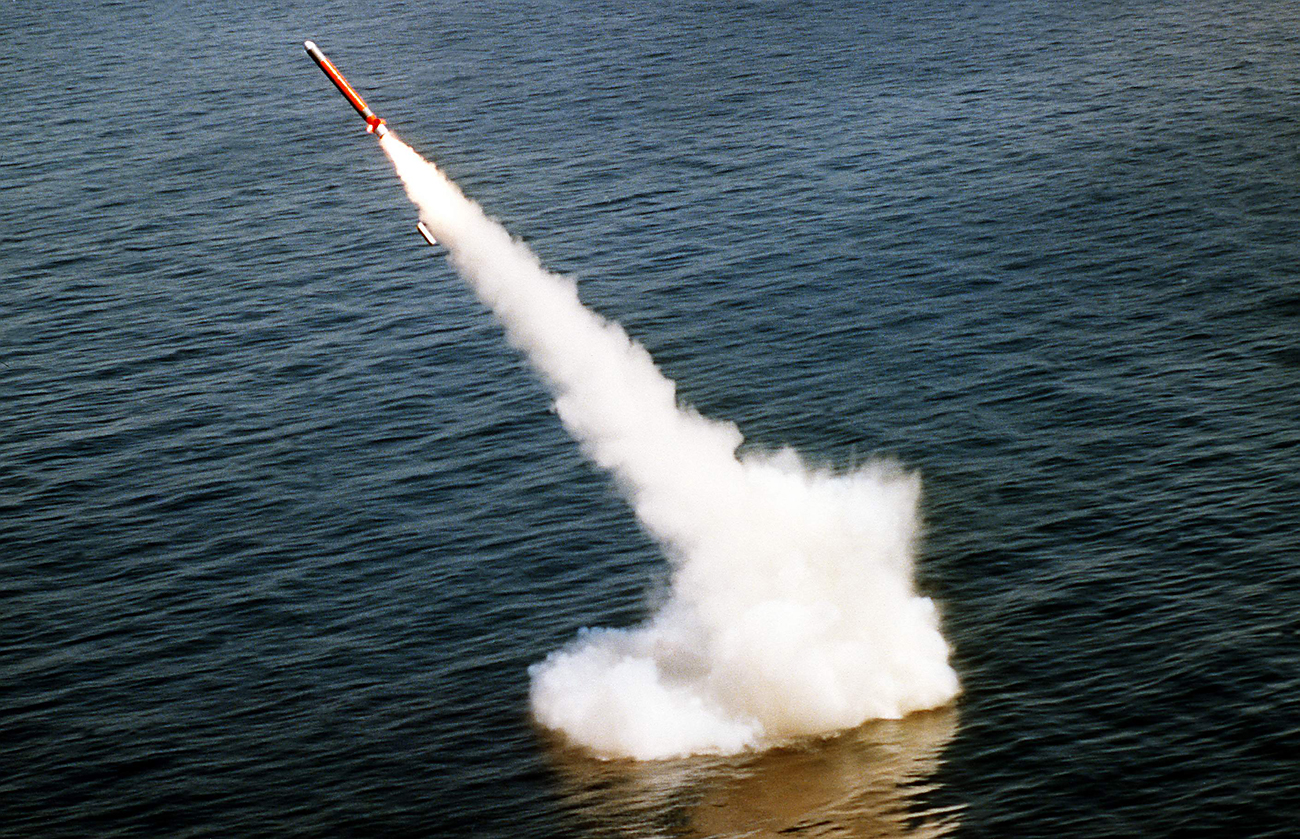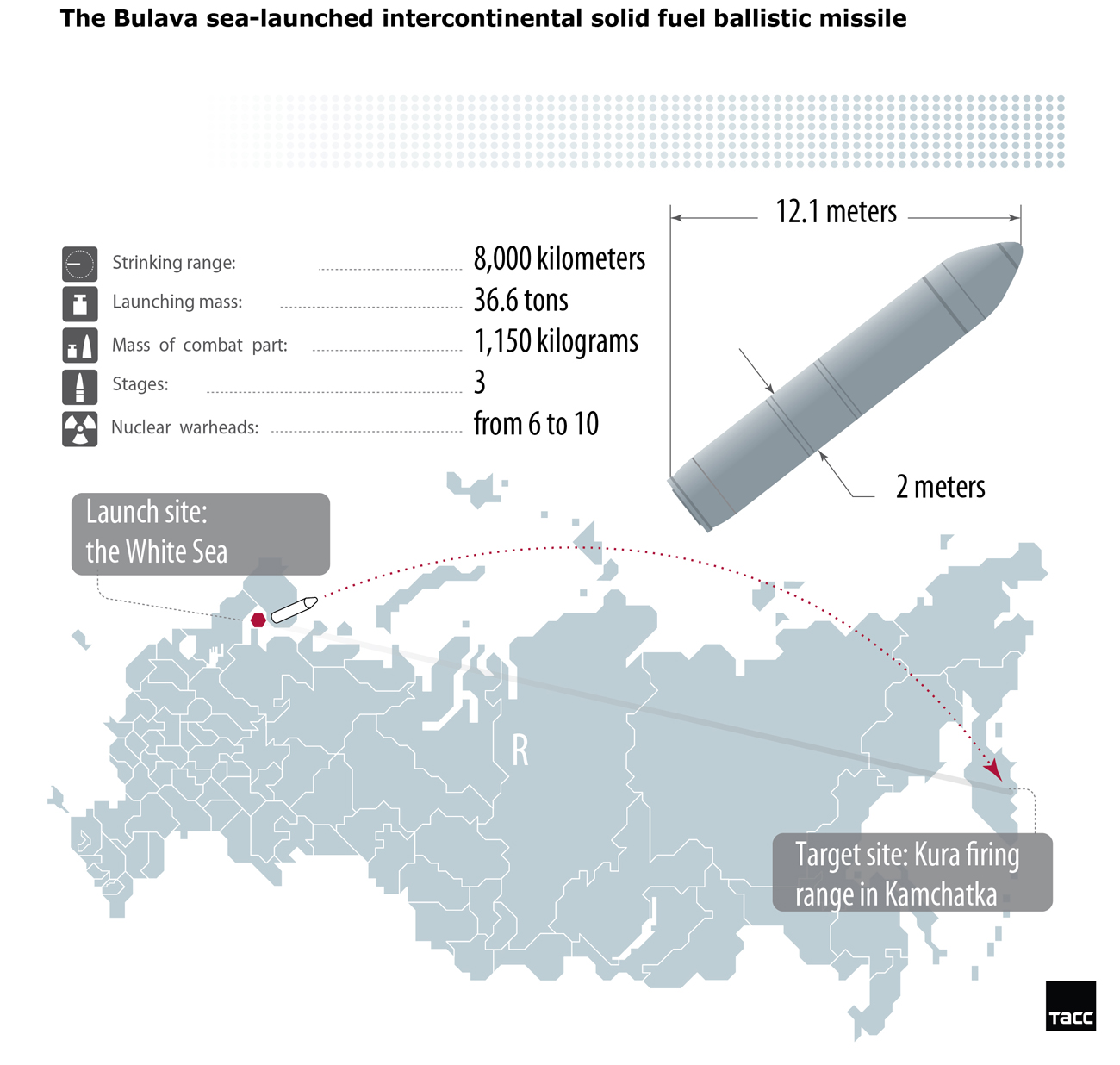
The test of Bulava intercontinental ballistic missile.
Press PhotoOn the night of Sept. 28 the Yury Dolgoruky nuclear submarine tested two Bulava intercontinental ballistic missiles (ICBM). The sub was supposed to navigate at a depth of 50 meters in the White Sea and strike a target on the opposite side of Russia, at the Kura firing range on the Kamchatka Peninsula.
Since these were just tests, the missiles were not carrying nuclear warheads. Instead they contained electronic warheads that transmitted flight information to the control center.
However, only one of the two missiles reached its target. The second, according to military personnel, "autodestructed" after the first flight phase and fell into the sea.
Military sources at the Gazeta.ru publication say that the missile was slightly damaged on launch, making it impossible for it to reach its destination. The Russian Defense Ministry declined to comment.
 Source: TASS
Source: TASS
This was not the first time that something has gone wrong with the Bulava: 8 out of 26 launches of the missile have been unsuccessful.
However, despite these unconvincing statistics, specialists insist that it is too early to write the project off as unsuccessful, since combat technology does not immediately reach the necessary level of reliability: It first goes through a series of tests, during which there are often problems.
For example, according to an RBTH source in the Russian defense industry, the heaviest and most powerful Russian intercontinental ballistic missile, the R-36M2 Voevoda, also exploded in the air and fell during the first 30 trials but was then perfected and gained a reputation as a reliable missile.
"In Bulava's case a series of mistakes was made during construction,” said the source. “Firstly, the developers, who had never worked with ICBMs for nuclear submarines, in certain stages limited themselves to computer models rather than testing at sea. Secondly, the government should not have been trying to optimize costs and deadlines by unifying ‘ground’ missiles with ‘sea’ missiles.”
Russian military experts say that it is too early to understand the reason for the failure of the missile. It could be down to insufficient improvement after unsuccessful launches or a production defect.
"You need to look at the missile's exact production date,” said Vladimir Yevseyev, deputy director of the Institute of CIS Countries. “Was it produced during the period of unsuccessful launches that already had technical defects or after having been supplied to the armed forces?"
Yevseyev explained that experts will now analyze the incident and the military will take appropriate action.
"This requires extremely serious investigation. If a part of the missiles supplied to the Russian army breaks down after being launched, this could reduce the combat readiness of Russia's nuclear forces and could even lead to a technogenic catastrophe," he said.
Bulava and the new-generation submarines
Launch of two Bulava missiles from the Vladimir Monomakh submarine in 2015. Video by YouTube
The Russian Navy currently has three 955 Borei nuclear submarines, which were produced for the Bulava ICBM.
Each of them can hold up to 16 Bulava-class missiles with a range of around 5,000 miles (8,000 km). The Bulava can carry from 6 to 10 hypersonic maneuverable individually guided nuclear warheads with a yield of 100-150 kilotons, which can alter their flight trajectory in terms of height and course.
By 2020 the Russian Navy will obtain eight project Borei and Borei-A missile strategic submarines (the Borei-A is a modified submarine that can carry 20 Bulava ICBMs).
All rights reserved by Rossiyskaya Gazeta.
Subscribe
to our newsletter!
Get the week's best stories straight to your inbox